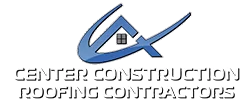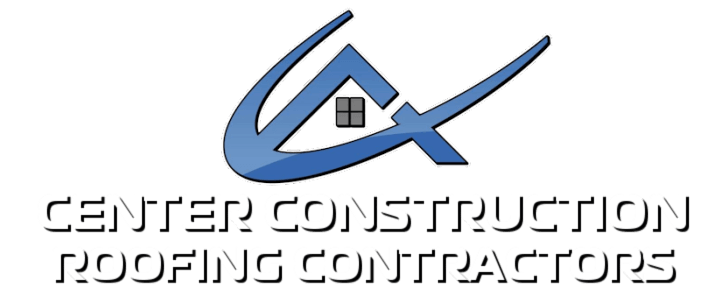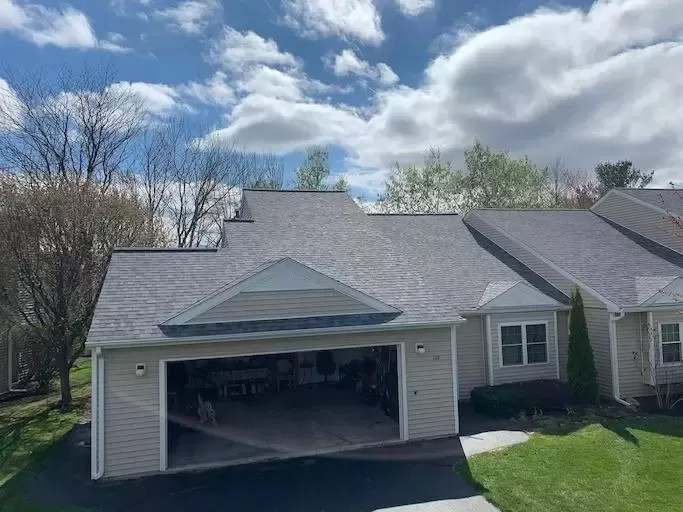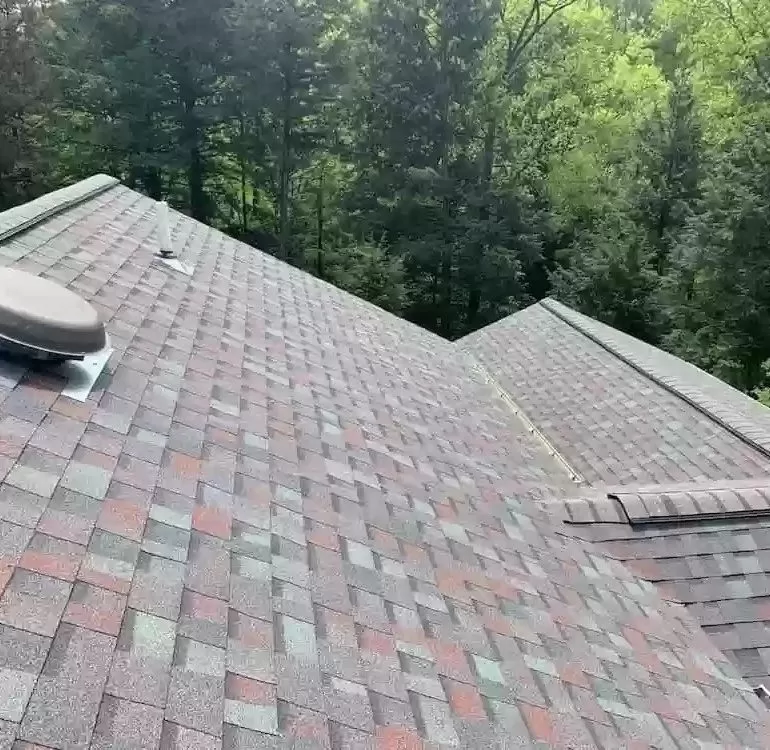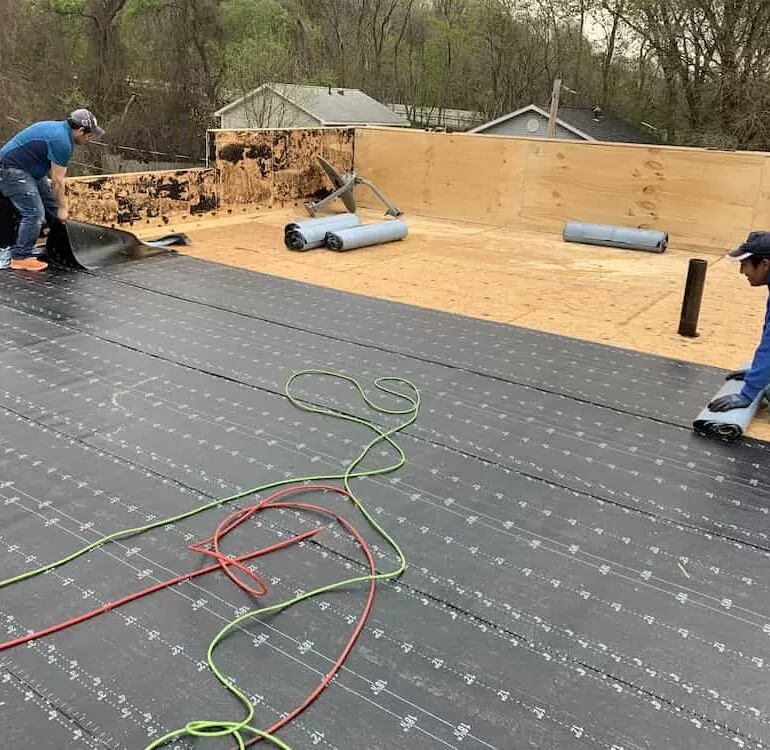Rising energy costs have homeowners searching for smarter ways to reduce monthly expenses without sacrificing comfort. Your roof plays a surprisingly significant role in your home’s overall energy consumption, accounting for up to 25% of heat gain during summer months and substantial heat loss in winter. Choosing energy efficient roofing for homes isn’t just an environmentally conscious decision—it’s a financially savvy investment that pays dividends for years to come.
Modern roofing technology has evolved dramatically, offering homeowners in Albany, NY, and surrounding areas innovative materials that reflect solar heat, improve insulation, and dramatically reduce HVAC workload. Whether you’re building new or planning a roof replacement, understanding your energy-efficient options helps you make an informed decision that protects both your wallet and your comfort. Center Construction LLC specializes in installing energy-efficient roofing solutions throughout the Albany region, combining expert craftsmanship with cutting-edge materials to deliver roofs that perform beautifully year-round. Their comprehensive services also include professional siding and gutter installations, ensuring your entire home exterior works together for maximum efficiency.
Understanding Energy Efficiency in Roofing
What Makes a Roof Energy Efficient?
Energy efficiency in roofing revolves around three core principles: reflection, emission, and insulation. Reflective roofing materials bounce solar radiation away from your home rather than absorbing it, keeping attic spaces cooler. Emissive properties allow roofs to release absorbed heat quickly, preventing prolonged thermal retention. Proper insulation underneath roofing materials creates a barrier that maintains consistent indoor temperatures regardless of external weather conditions.
Key Benefits You’ll Experience:
- Lower utility bills: Reduced cooling costs by 10-30% during peak summer months
- Extended HVAC lifespan: Less strain on air conditioning systems means fewer repairs and longer equipment life
- Enhanced comfort: More consistent indoor temperatures eliminate hot spots and drafty areas
- Increased property value: Energy-efficient upgrades appeal strongly to environmentally conscious buyers
- Environmental impact: Reduced energy consumption lowers your carbon footprint significantly
When considering a residential roofing service, prioritizing energy efficiency transforms a necessary expense into a long-term investment with measurable returns.
Top 5 Energy-Efficient Roofing Options
1. Cool Metal Roofing Systems
Metal roofing has emerged as a frontrunner in energy-efficient construction, offering unmatched durability combined with exceptional thermal performance. Modern metal roofs feature special reflective coatings that bounce up to 70% of solar energy away from your home, significantly reducing heat absorption compared to traditional materials.
Why Metal Roofs Excel:
- Longevity: 40-70 year lifespan with minimal maintenance requirements
- Reflectivity: Pre-painted finishes with high Solar Reflectance Index (SRI) ratings
- Versatility: Available in various styles mimicking traditional shingles, tiles, or sleek contemporary designs
- Recyclability: Made from 25-95% recycled content and 100% recyclable at end of life
Standing seam metal roofs represent the premium option within metal roofing, featuring concealed fasteners and interlocking panels that provide superior weather resistance alongside outstanding energy performance. Their raised seams create natural ventilation channels that further enhance cooling efficiency.
2. Premium Asphalt Shingles with Reflective Granules
Don’t dismiss asphalt shingles as outdated—today’s energy-efficient versions incorporate advanced reflective granule technology that dramatically improves thermal performance while maintaining the classic aesthetic homeowners love. These specially engineered shingles use ceramic-coated granules that reflect infrared radiation, keeping your roof surface significantly cooler than standard asphalt products.
Modern Asphalt Advantages:
- Cost-effectiveness: Lower upfront investment compared to alternative materials
- Proven performance: Decades of reliable field data supporting durability claims
- Color options: Wide variety of shades designed to complement any architectural style
- Easy repairs: Widespread contractor familiarity ensures simple maintenance and replacement
Quality asphalt shingles services from experienced professionals ensure proper installation techniques that maximize ventilation and energy efficiency. Look for products labeled as “cool roof” certified by the Cool Roof Rating Council for guaranteed performance standards.
💡 Expert Tip: Maximizing Your Roof’s Energy Efficiency
Regardless of which energy efficient roofing for homes material you choose, proper attic ventilation is absolutely critical. Without adequate airflow, even the most advanced roofing materials can’t perform optimally. Ensure your contractor installs sufficient ridge vents, soffit vents, or powered attic fans to create continuous air circulation. This simple step can boost your roof’s energy performance by an additional 15-20% while extending material lifespan by preventing moisture buildup and heat damage.
3. TPO and EPDM Rubber Flat Roofing
For homes with flat or low-slope roof sections, thermoplastic polyolefin (TPO) and ethylene propylene diene monomer (EPDM) rubber membranes offer exceptional energy efficiency combined with superior waterproofing capabilities. These single-ply roofing systems have become increasingly popular in both commercial roofing and residential applications.
TPO Roofing Benefits:
TPO flat roofs feature bright white surfaces that reflect up to 87% of solar radiation, making them among the most energy-efficient options available. The heat-welded seams create a completely watertight membrane that resists UV degradation, ozone exposure, and chemical damage. TPO’s flexibility accommodates building movement without cracking, while its smooth surface resists algae and dirt accumulation.
4. Composite Shingles with Advanced Technology
Composite or synthetic shingles represent the cutting edge of roofing innovation, combining multiple materials engineered specifically for superior performance characteristics. These advanced products often incorporate recycled content including rubber, plastic, and wood fiber, compressed and shaped to mimic natural materials like slate or cedar shake while delivering enhanced energy efficiency.
Composite Shingle Innovations:
- Multi-layer construction: Reflective layers embedded within shingle structure
- Dimensional design: Three-dimensional profiles create air gaps for ventilation
- Impact resistance: Class 4 hail ratings protect against storm damage
- Fade resistance: UV-stable pigments maintain appearance for decades
Professional composite shingles services ensure these sophisticated materials are installed according to manufacturer specifications, preserving warranty coverage and optimizing thermal performance. The initial investment typically sits between traditional asphalt and premium metal options, offering an attractive middle-ground solution.
5. Clay and Concrete Tiles with Thermal Mass
Clay and concrete tiles leverage thermal mass principles to regulate temperature fluctuations naturally. These dense materials absorb heat slowly during the day and release it gradually at night, creating a natural thermal lag that reduces peak cooling loads. The inherent air space between tiles and roof decking provides additional insulation value.
Traditional Tiles, Modern Efficiency:
- Natural ventilation: Tile profile creates continuous airflow beneath roofing surface
- Extreme durability: 50-100 year lifespan with minimal maintenance
- Fire resistance: Class A fire rating provides maximum protection
- Color permanence: Mineral pigments won’t fade or require repainting
While heavier and requiring structural support verification, tile roofing delivers unmatched aesthetic appeal combined with excellent energy performance, particularly in Mediterranean or Spanish-style architecture.
Cost Analysis and Return on Investment
Understanding the financial implications of energy efficient roofing for homes helps justify the initial investment through long-term savings calculations. While premium materials carry higher upfront costs, their extended lifespan and reduced energy consumption often result in lower total cost of ownership over the roof’s lifetime.
Investment Considerations:
Initial material and installation costs vary significantly based on your chosen roofing system. Asphalt shingles represent the most budget-friendly option, while metal roofing and tile systems require larger upfront investments. However, factor in longevity—a metal roof lasting 50 years versus asphalt needing replacement every 20 years changes the cost equation dramatically.
Energy savings accumulate monthly through reduced heating and cooling expenses. A typical Albany-area home might save $200-500 annually depending on roof size, material choice, and home insulation quality. Over a 30-year period, these savings can offset much of the premium paid for energy-efficient materials.
Additional Financial Benefits:
- Insurance discounts: Many carriers offer reduced premiums for impact-resistant and fire-rated roofing
- Tax incentives: Federal and state programs occasionally provide credits for energy-efficient home improvements
- Increased resale value: Energy-efficient features appeal strongly to buyers and command higher sale prices
- Reduced maintenance: Premium materials typically require fewer repairs and less frequent servicing
Consult with roofing professionals to calculate personalized ROI projections based on your specific home characteristics and local energy rates.
Installation and Maintenance Best Practices
Even the most advanced roofing materials won’t deliver promised energy efficiency without proper installation techniques. Working with experienced contractors ensures your investment performs as expected while protecting manufacturer warranty coverage.
Critical Installation Factors:
Adequate ventilation systems must be integrated during installation to prevent moisture accumulation and heat buildup. Ridge vents combined with soffit vents create natural airflow that exhausts hot air from attic spaces. Some situations benefit from powered attic fans that actively draw heat away from living spaces.
Proper insulation beneath roofing materials amplifies energy savings by creating an effective thermal barrier. Building codes specify minimum R-values, but exceeding these standards further improves performance. Spray foam insulation applied to roof decking provides superior air sealing compared to traditional batt insulation.
Ongoing Maintenance Requirements:
- Annual inspections: Check for damaged shingles, loose fasteners, and debris accumulation
- Gutter cleaning: Keep drainage systems clear to prevent water backup and ice dams
- Trim overhanging branches: Reduce shade, debris, and potential impact damage
- Address repairs promptly: Small issues escalate quickly when left unattended
Regular maintenance preserves energy efficiency by maintaining reflective surface properties and preventing air leakage pathways. Schedule professional inspections every 3-5 years to catch potential problems before they compromise performance.
Climate Considerations for Albany, NY Homeowners
The Capital Region’s variable climate presents unique challenges requiring roofing materials that excel in both summer heat and winter cold. Albany experiences temperature swings from below zero in January to 80s and 90s during July, placing significant demands on roofing systems.
Winter Performance Factors:
Ice dam prevention becomes critical for maintaining energy efficiency during Albany’s snowy winters. Proper attic insulation and ventilation prevent heat loss that melts snow on roof surfaces, creating dangerous ice formations. Metal roofing’s smooth surface allows snow to slide off naturally, while steep-pitched designs shed accumulation effectively.
Summer Cooling Priorities:
Reflective roofing materials dramatically reduce cooling loads during humid Capital Region summers. Light-colored surfaces reflect solar radiation rather than absorbing it, keeping attic temperatures 20-30 degrees cooler than dark roofs. This reduction directly translates to decreased air conditioning runtime and lower electricity consumption.
Four-season durability matters tremendously in upstate New York. Choose materials rated for extreme temperature fluctuations, high wind resistance, and impact from hail or falling branches. Products certified for northern climates ensure reliable performance through decades of challenging weather exposure.
Common Myths About Energy-Efficient Roofing
❌ MYTH: All light-colored roofs are automatically energy efficient
✓ FACT: Color matters, but material composition and reflective coatings play equally important roles. A white shingle without reflective granules may perform worse than a darker metal roof with specialized coatings. Look for products with verified Cool Roof Rating Council certifications rather than relying solely on appearance.
❌ MYTH: Energy-efficient roofing only benefits warm climates
✓ FACT: While cooling savings receive more attention, energy-efficient roofing provides year-round benefits in mixed climates like Albany’s. Superior insulation properties reduce heating costs during winter months, while reflective surfaces minimize summer cooling expenses. The combination delivers consistent savings regardless of season.
❌ MYTH: Energy-efficient roofing isn’t worth the extra cost
✓ FACT: While premium materials carry higher upfront prices, the total cost of ownership often favors energy-efficient options. Extended lifespans, reduced energy bills, lower maintenance requirements, and increased home value combine to deliver positive returns on investment, typically within 7-12 years depending on material choice and home characteristics.
Making Your Energy-Efficient Roofing Decision
Selecting the ideal energy efficient roofing for homes requires balancing multiple factors including budget, aesthetic preferences, climate conditions, and long-term performance goals. Start by evaluating your home’s architectural style—certain materials complement specific designs better than others.
Decision Framework:
Consider your timeframe for home ownership. If you plan to sell within 5-10 years, mid-range options like reflective asphalt shingles or composite materials provide excellent value. Longer-term homeowners benefit more from premium materials like metal or tile that deliver decades of maintenance-free performance.
Assess your current attic insulation and ventilation systems. Sometimes upgrading these components delivers greater energy savings than replacing functional roofing materials. A comprehensive energy audit identifies your home’s specific weaknesses and priorities.
Working With Professional Contractors:
Request detailed proposals comparing multiple material options with projected energy savings, lifespan expectations, warranty coverage, and total installed costs. Reputable contractors provide transparent information without pressure tactics, allowing you to make informed decisions aligned with your goals.
Verify contractor credentials including proper licensing, insurance coverage, and manufacturer certifications. Quality installation proves as important as material selection for achieving promised energy efficiency results.
Frequently Asked Questions
How much can I realistically save on energy bills with an energy-efficient roof?
Actual savings vary based on your home’s size, current insulation levels, HVAC efficiency, and local energy rates, but most Albany-area homeowners see 15-25% reductions in cooling costs during summer months. Annual savings typically range from $200-500 for average-sized homes, with larger properties or poorly insulated homes experiencing even greater benefits. Winter heating savings add another 5-10% reduction, creating year-round financial benefits that accumulate substantially over the roof’s lifespan.
Do energy-efficient roofing materials work effectively in cold climates like Albany?
Absolutely. While marketing often emphasizes cooling benefits, energy-efficient roofing delivers significant advantages in northern climates through superior insulation properties and moisture management. Premium materials like metal roofing excel at shedding snow and preventing ice dams, while proper ventilation systems prevent heat loss that drives up winter heating costs. The key is choosing materials specifically rated for four-season performance rather than products designed exclusively for hot climates.
How long does it take to recoup the investment in energy-efficient roofing?
Payback periods typically range from 7-15 years depending on material choice, energy prices, and home characteristics. Metal roofing with 50-year lifespans delivers positive returns well within the material’s service life, while premium asphalt shingles often break even within 10-12 years. Factor in increased home value, reduced maintenance costs, and potential insurance discounts to accelerate ROI calculations. Many homeowners focus less on strict payback calculations and more on improved comfort and environmental benefits.
Can I install energy-efficient roofing over my existing roof?
Building codes and manufacturer warranties typically prohibit installing new roofing over multiple existing layers due to weight concerns and ventilation requirements. However, installing certain materials over a single layer of existing asphalt shingles is sometimes permissible and can reduce installation costs. This decision requires professional evaluation of your roof deck’s structural condition, existing material compatibility, and local building code compliance. Complete tear-off generally provides better long-term performance and allows inspection of underlying deck conditions.
Conclusion: Invest in Your Home’s Future
Choosing energy efficient roofing for homes represents one of the most impactful improvements you can make to reduce operating costs while enhancing comfort and property value. The five options detailed in this guide each offer unique advantages suited to different budgets, architectural styles, and performance priorities.
Albany-area homeowners face demanding climate conditions requiring roofing systems that perform reliably through frigid winters and humid summers. Premium energy-efficient materials deliver consistent protection while significantly reducing the environmental impact of home heating and cooling. The initial investment pays dividends through decades of lower utility bills, reduced maintenance requirements, and increased resale appeal.
Don’t navigate these important decisions alone—partner with experienced professionals who understand local building codes, climate challenges, and material performance characteristics specific to the Capital Region.
Ready to Reduce Your Energy Bills?
Center Construction LLC brings decades of roofing expertise to homeowners throughout Albany, NY, and surrounding areas. Our team specializes in installing energy-efficient roofing systems that deliver measurable savings and lasting protection. From initial consultation through final inspection, we ensure your project exceeds expectations.
Serving Albany and the Capital Region with expert roofing, siding, and gutter services

